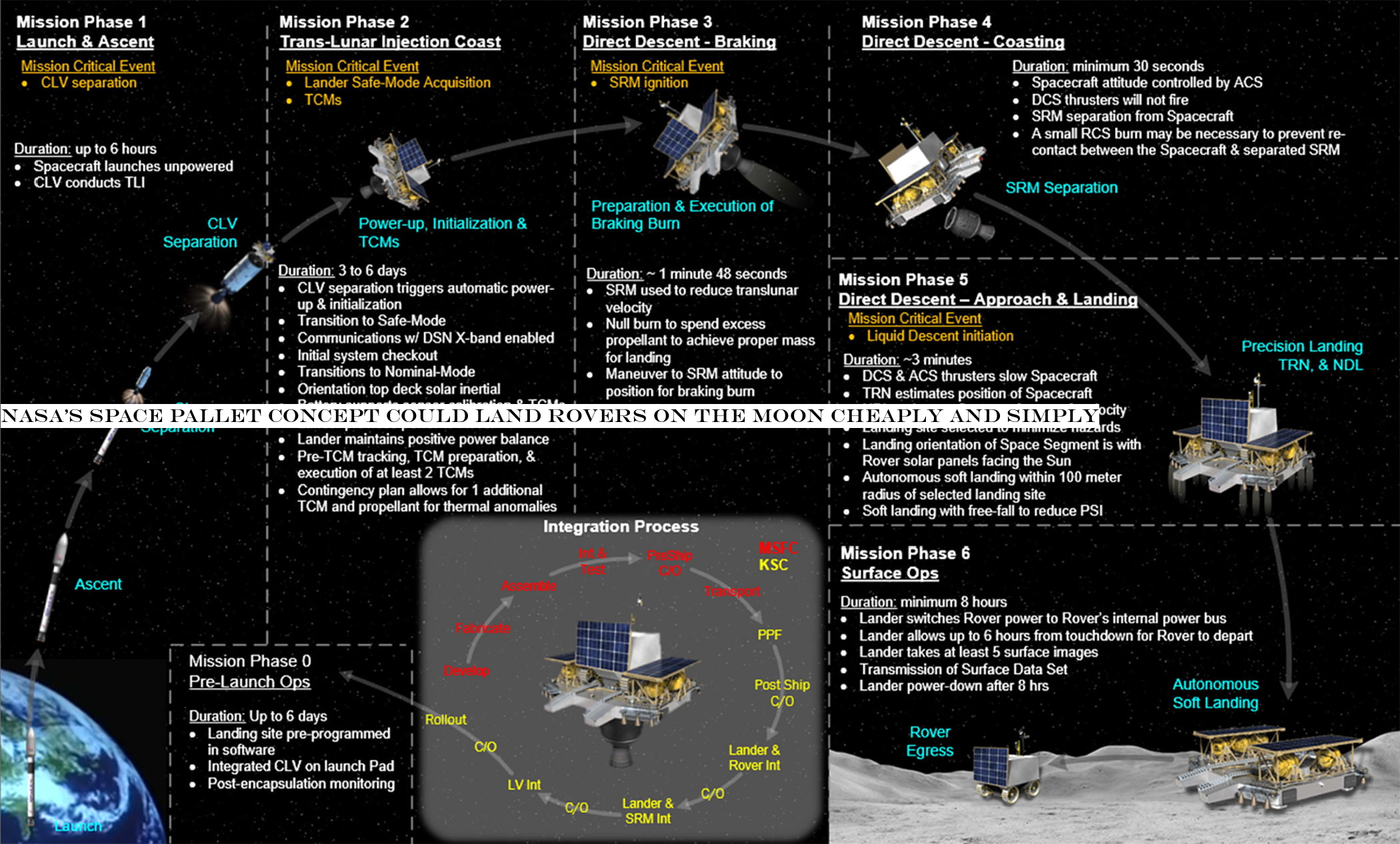INSUBCONTINENT EXCLUSIVE:
Establishing an enduring presence on the Moon will mean making a lot of landings — and NASA researchers want to make those landings as
reliable and cheap as possible
This robotic &pallet lander& concept would be a dead simple (as lunar landers go) way to put up to 300 kilograms of rover and payload onto
the Moon surface.
Detailed in a technical paper published today, the lander is a sort of space pallet: a strong, basic framework that could
be a unit in many a future mission
It still a concept and doesn&t really have a name, so space pallet will do for now.
NASA VIPER lunar rover will hunt water on the Moon in
2022
It an evolution of a design that emerged in studies surrounding the VIPER mission that was intended to &minimized cost and schedule&
and just get the rover to the surface safely
In a rare admission of (at least theoretically) putting cost over performance, the paper introduction reads:
The design of the lander was
based on a minimum set of level 1 requirements where traditional risk, mass, and performance trade parameters were weighed lower than cost
In other words, the team did not sacrifice ‘good enough& for ‘better& or ‘best.&
It should be noted, of course, that &good enough&
hardly implies a slapdash job in the context of lunar landers
It just means that getting 5 percent more tensile strength from a material that costs 50 times more wasn&t considered a worthwhile trade-off
Same reason we don&t use ebony or elm for regular pallets
Instead they&re using the space travel equivalent of solid pine boards that have been tested into the ground
(The team does admit to extrapolating a little but emphasizes that this is first and foremost a realistic approach.)
The space pallet would
go up aboard a commercial launch vehicle, such as a Dragon atop a Falcon 9 rocket
The vehicle would get the pallet and its rover payload into a trans-lunar injection trajectory, and a few days later the space pallet would
perform the necessary landing maneuvers: attitude control, landing site selection, braking, and a soft touchdown with the rover solar panels
facing the sun.
Once on the surface, the rover would go on its merry way at some point in the next couple hours
The lander would take a few surface images and characterize its surroundings for the team on Earth, then shut down permanently after 8 hours
or so.
Yes, unfortunately the space pallet is not intended to survive the lunar night, the researchers point out
Though any presence on the moon surface is a powerful resource, it expensive to provide the kind of power and heating infrastructure that
would let the lander live through the freezing, airless cold of the Moon weeks-long night.
Still, it possible that the craft could be
equipped with some low-key, self-sustaining science experiments or hardware that could be of use to others later — a passive beacon for
navigation, perhaps, or an intermittent seismic sensor that detect nearby meteorite impacts.
I&ve asked for a bit more information on the
possibilities of science instruments onboard, and what the alternatives might be should the space pallet not be pursued further than concept
But even if that were to be the case, the team writes in the paper, &it is important to note that these and other derived technologies are
extensible to other lander designs and missions.&

